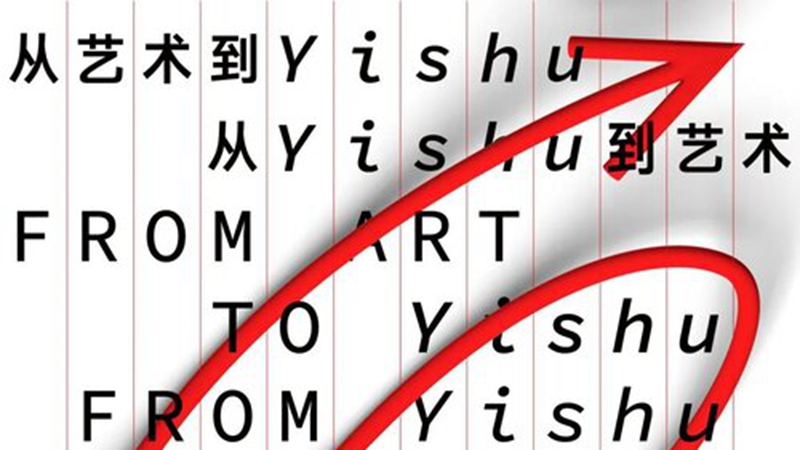Inside-Out Practice|Series of interviews with authors from Yishu #5

Britta Erickson
Dr. Britta Erickson is an independent scholar and curator. Her doctoral dissertation investigates patronage modes in the career of the mid-nineteenth-century Shanghai School master, Ren Xiong. She has taught at major universities, publishes and lectures widely, and has curated important exhibitions of contemporary Chinese art, including the Sackler Gallery’s first major solo show for a living artist, Word Play: Contemporary Art by Xu Bing. Dr. Erickson now serves as Artistic Director of INK Studio, a Beijing gallery devoted to contemporary ink artists, and includes among her recent projects the production of a film series, The Enduring Passion for Ink.
1. When did you start writing for Yishu? How many articles have you published in Yishu? What are they about? Why do you choose to write for Yishu? What is particularistic about Yishu? What is it like to work with Yishu’s editors?
Yishu came along at the perfect moment, providing sophisticated and nuanced readings of Chinese contemporary art just when interest in the field was beginning to grow. In its almost two decades of publication, the journal has delivered timely information, in English, encouraging and educating a new Euro-American audience for Chinese contemporary art. I have been honored to be a member of Yishu’s Advisory Board since its inception, and also to have been a juror for the first Yishu Award for Critical Writing on Contemporary Chinese Art, in 2010. This important initiative shines a light on the need for discriminating art criticism in shaping the field, and the exigency of nurturing such critical capacity. I have been Guest Editor for one issue of Yishu, and have published seven essays in the journal, one an interview with Zheng Shengtian. I enjoyed immensely interviewing Sheng: to hear of his experiences as part of the art world in China during the 1970s, 1980s, and 1990s is fascinating. It is this personal history—Sheng’s point of view as someone long embedded in the art world—intertwined with his generosity of spirit, that allowed Yishu to take off. The other editors (including Keith Wallace, the editor with whom I most interacted, and Ken Lum) are brilliant—what a fabulous group to start a journal!
2. What is your research area? What have you been working on recently?
The essays I have published in Yishu reflect my current interests, three of them focusing on the subject of contemporary Chinese ink. One describes what so far as I know is the first nude performance in China, by Wang Peng: it involved splattering ink on his body and surroundings, and printing his body on paper (Fall/September 2007). A second, “The Contemporary Artistic Deconstruction—and Reconstruction—of Ink Painting” (Summer/June 2003), examined the place of ink in the realm of contemporary Chinese art. And the third, “Innovations in Space and Painting Philosophy: Paintings by Zheng Chongbin and Qiu Shihua” (January 2008), considered the philosophy underpinning ink painting, and its relevance to other media. This was a prominent consideration of the exhibition for which the paper was originally written, Reboot: The Third Chengdu Biennale, an exhibition seeking to reposition Chinese ink painting (co-curated by Kuiyi Shen, Feng Bin, and me).
3. What are your thoughts regarding the situation of art and culture in China today? What does Chinese art and culture mean to you?
While I continue to be interested in Chinese contemporary art in all media, I have gradually narrowed my focus to contemporary Chinese ink, feeling qualified to do so by having studied the connoisseurship of ink painting with a knowledgeable collector, Jung Ying Tsao. One of my major projects has been to produce ten short films on ten living ink painters, The Enduring Passion for Ink. The artists come from a wide range of backgrounds, personal, educational, and philosophical, and their techniques vary widely. The films afford the viewer an unprecedented look into the practice of an artist. The Enduring Passion for Ink is available on Kanopy.com (search my name), and can be accessed via many local libraries and academic libraries.
A second major project is the founding, with two colleagues (Craig Yee and Chris Reynolds), of a Beijing gallery, Ink Studio, whose mission is to present Chinese experimental ink as a distinctive contribution to contemporary transnational art-making in a closely-curated exhibition program supported by in-depth critical analysis, scholarly exchange, bilingual publishing, and multimedia production.
4. What are the most significant developments that have taken place in contemporary Chinese art in the past two decades in terms of the art produced and systems it functions within?
Regarding the question, “what are the most significant developments that have taken place in contemporary Chinese art in the past two decades,” I am most struck by a development that has not occurred. Where is ink? I believe things have in general become more sophisticated, and more complicated, in all arenas: art practice, criticism, publishing, scholarship, and exhibitions. That said, and despite widespread acceptance of art composed from a myriad of materials, ink seems not to have found easy access into the expansive world of art. While there are many outstanding ink art practitioners, the plethora of publications and exhibitions—including periodical exhibitions—devoted to ink does not adequately support those artists’ work. And most notably, there is rarely a successful effort to integrate ink art into the broader realm of contemporary art. (Having said that, kudos to Yishu for having published many articles involving ink art.)
Interview Planning: Liu Yusi, Huang Wenlong
Interview Translation:Liu Qian
Proof-reading:Ninjia, Liu Yusi, Zhang Ligeng, Huang Wenlong
Post Editing: Liu Qian
Design: Onion


Leave a Reply